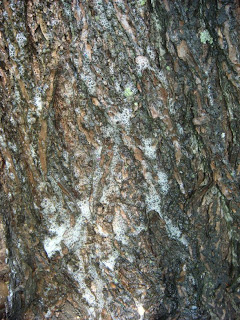Paddling through the past UPDATE!
Paddling through the Past is a multi-disciplinary archaeological project designed to investigate the role of waterways in the French colonial period. Their mission is to document the landscape archaeology of the Champlain valley and raise awareness of the need for heritage stewardship of the Lake Champlain/Richelieu Corridor.
Here are a few excerpts from Andrew Beaupre's journey paddling Lake Champlain and for more information check out his blog! http://paddlingthroughthepast.blogspot.com/
Day one: Aug 7
Finally, the trip has begun. Given the expected
weather, we decided to truncate the first day travel and begin at the
Chimney Point State Historic Site and make the short one mile
paddle to DAR State Park. I had never been to the park before and
was very pleasantly surprised.
They put us up in the paddlers campsite a mere 1000 feet from the lake shore. The trail to the site takes one past two 18th century settler cabin cellar holes. Interestingly, the cabins would have would have been out of sight of the fortifications at Chimney and Crown points, yet still within earshot as the rumble of 18 wheelers across the newly constructed Champlain Bridge reminded us. One of the cabin foundations was draped in grapevines. Primary sources from the 18th century mention grapes being planted by the French settlers for food and wine. Whether these grapes are descended from those the French introduced or belong to a species of native grapes remains to be seen, but I collected samples for ethnobotantical study back at William and Mary.
They put us up in the paddlers campsite a mere 1000 feet from the lake shore. The trail to the site takes one past two 18th century settler cabin cellar holes. Interestingly, the cabins would have would have been out of sight of the fortifications at Chimney and Crown points, yet still within earshot as the rumble of 18 wheelers across the newly constructed Champlain Bridge reminded us. One of the cabin foundations was draped in grapevines. Primary sources from the 18th century mention grapes being planted by the French settlers for food and wine. Whether these grapes are descended from those the French introduced or belong to a species of native grapes remains to be seen, but I collected samples for ethnobotantical study back at William and Mary.
As we set up camp a mere 20 yards from the grape
draped cabin site, I could not help but think that one of my ancestors could
have camped at this very spot in the Hacquort seignurie 250 years ago.
A settler family carving a living out of the forest and tilling food from
the hard packed Addison county clay.
Aug
9
Undeterred
by an early morning thunderstorm, we packed up and left DAR by 8:30.
The conditions could not have been better, sunny skies and
the lake was as calm as a mill pond. After a mere 3.5 hours of paddling ,
we arrived at Button Bay State Park. If Deirdre and I can cover over 8.5
miles on under 4 hours, I have no trouble believing the accounts that French Canadian canoemen could over 30 miles a day.
Though
on the water, Button Bay State Park sits on a terrace above the shoreline. As I
carried my share of the 200 plus pounds of camping gear, camera equipment,
food, supplies and our 17 foot canoe to our campsite, I could not help but
think of the voyageurs carrying their own gear and cargo over countless
portages. I then remembered that if I had lived in the 18th century I would
have been too large to be a voyageur. My 6 foot 1 inch frame would have
been considered extra ballast taking the place of valuable cargo in the
delicately loaded canoe-de-nord.
We
set up camp in one of the park lean- tos just before a thunderstorm. Great
timing. Spent the rest of the day drying gear and dodging the raindrops .
Some project supporters in the form of my brother and his family dropped
by to hand off some much needed supplies for the next leg of the trip. Always
good to see family, but the visit was cut short by another thunder boomer
rolling through.
Though
my presentation this evening was cancelled due to weather, I have nothing
but good things to say of Button Bay. New friends were made in the form
of campground hosts Joe and Linda as well as our contact here Park Naturalist
Christine. Anyone who visits the park has to check out the nature center. It
is worth the half mile walk out the point. Tomorrow, it's off to
Thompson's Point and Split Rock Point, the geological oddity that
made it's way onto a treaty ending the Spanish War of Succession .
Read More at the Paddling From the Past Blog



.jpg)
.jpg)
Comments
Post a Comment
Feel free to let us know what you think.